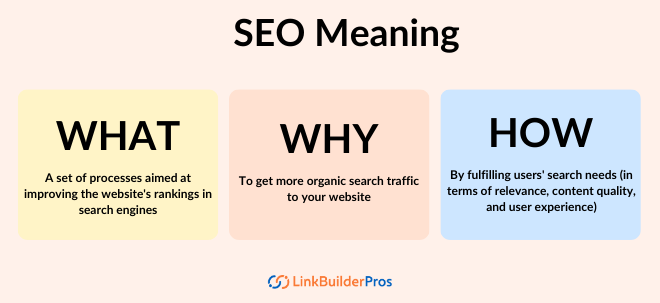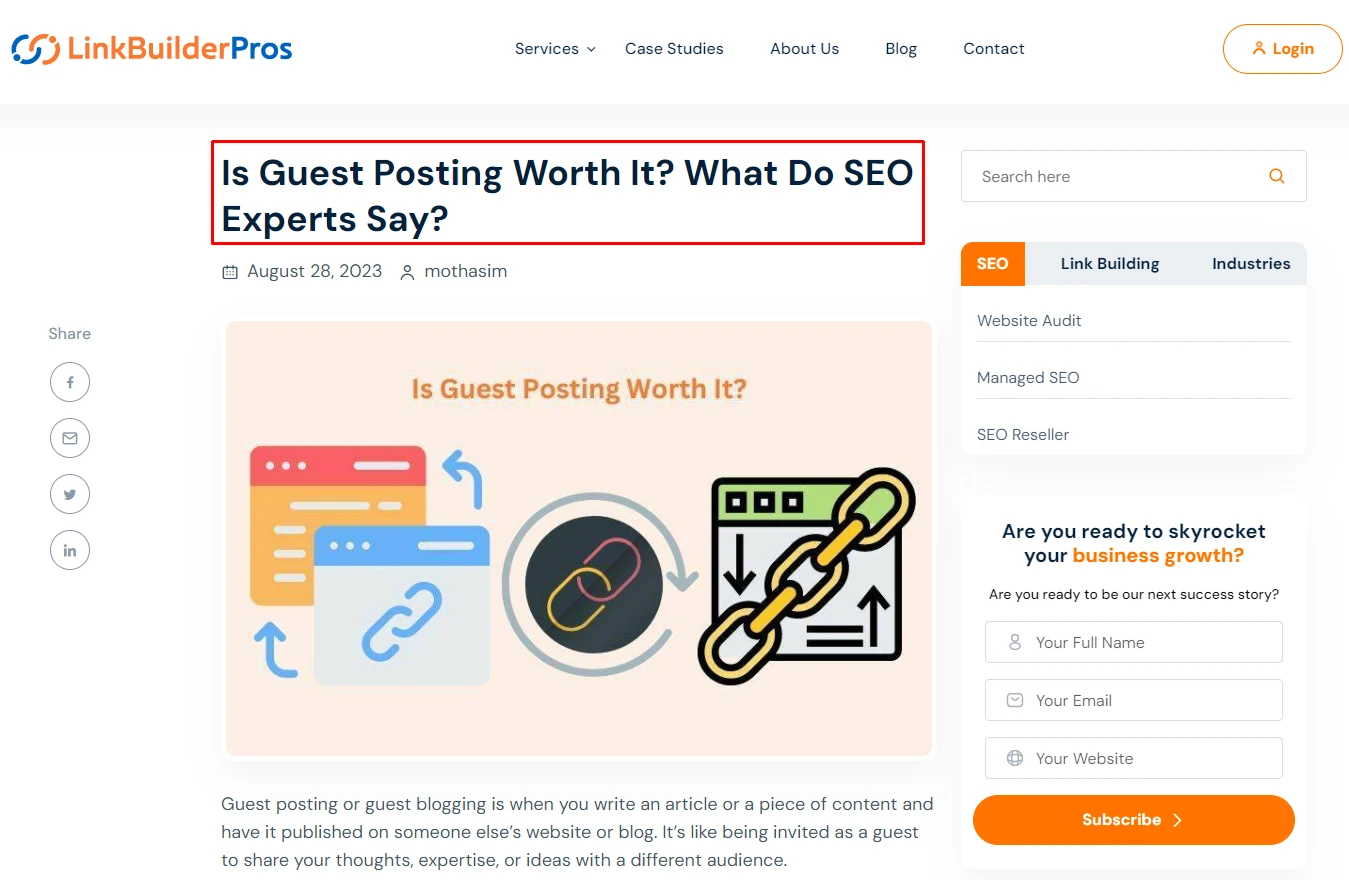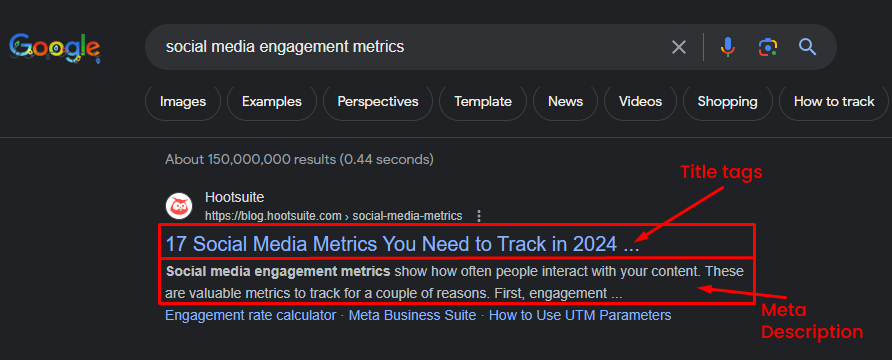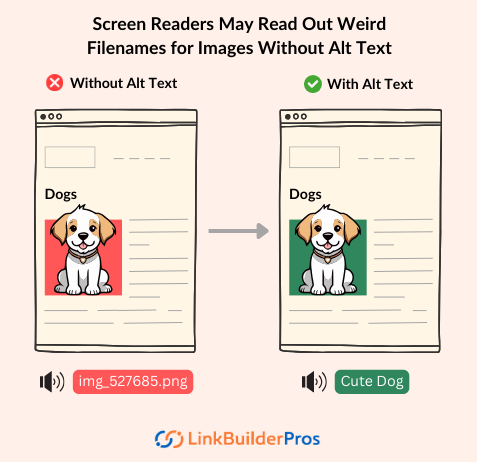Blogs
Practical Insights & Latest Happenings
Don’t miss out on the latest trends and info on SEO, search engines, social media, and more.
December 22, 2023
mothasim

SEO is a broad concept that comprises so many things, from website and content optimization to link building to performance measurement and so on. In order to make things easier, the whole concept can be divided into two categories – on page and off page.
If you are not clear about these factors, your campaign may not be so effective. No matter the type of website you have, if you want it well-ranked over the long haul, you have to know the differences between on page and off page SEO.
Let’s get to know more about their differences that you should know before you craft your SEO strategy according to your business goal.

In simple terms, Search Engine Optimization means optimizing your website according to the guidelines of search engines so that it ranks and enjoys a high traffic volume. This can be achieved through organic search results rather than referral or paid visitors.
SEO takes into account how search engines work, the algorithms that dictate their behavior, and the actual search terms or keywords typed into search engines.
SEO is vital because it improves the quality and amount of traffic to your website, which results in real commercial outcomes for businesses of all sizes.
There are different types of SEO, such as:
To put it simply, on-page is what you see or what happens in front of your eyes when you visit a website.
Let’s say your website is a book, and Google is trying to figure out what your book is about. On-page SEO is like arranging your book neatly with clear titles and chapters (headings and subheadings), while making sure the words people might search for (keywords) are used in a natural and relevant way.
One example is the page title that you see when you visit a blog like this:

This title is SEO optimized in many ways. For instance, the primary keyword “Is guest posting worth it” has been integrated while the length is between 50-60 characters as preferred by Google.
So, this is an example of on-page SEO because the SEO approach is visible right in front of you. It also involves other factors that we’ll talk about now, such as page titles, meta description, page speed, accessibility, etc.
Here are some key on-page SEO factors to consider:
The title tag and meta description summarize the content on each page. User attention can be captured and pages ranked for target audience with compelling titles and meta descriptions that appropriately reflect the page content using relevant keywords.
In case you didn’t know, a Meta Description is a 160 character (or 20-25 word) description of what your page is all about. This description is what shows up under a page name and URL when people search for a keyword phrase on search engines.
Here is an example of a Meta Description as it appears on the Search Engine Results Pages (SERPs).

Did you know that creating in-depth comprehensive content is a game-changer for your website? It’s like giving your page a big, shiny spotlight among your competitors.
When you cover a topic from inside-out, Google notices that and thinks, “Hey, this page really knows its stuff!” That’s a one-way ticket to the top of the search results.
What’s more, when your page is super helpful, people stick around and keep coming back for more. So, when you put in the effort to make your content the best it can be, it’s a win-win situation for you and your readers!
Incorporating visual elements such as images, infographics, videos, and other media into your content can help significantly enhance the overall user experience and engagement.
These elements go beyond traditional text. It provides interactive and visually appealing ways to present information. For instance, using videos or animations can effectively showcase product features, while infographics, podcasts, or webinars can be great for educating or informing your audience.
However, it’s important to optimize these multimedia elements for speed, quality, and accessibility. This involves reducing file sizes, providing alternative text and descriptions for accessibility and choosing the right file formats.
By doing so, you can create media content that is not only rich and dynamic but also SEO-friendly, ultimately improving your website’s visibility and user interaction.
A Tooltester study found that in 2023, the average desktop website load time was 2.5 seconds and for mobile, it was 8.6 seconds.
As you can see, fast load times are necessary to greatly improve user experience and enjoy better rankings. You can use tools like Pagespeed to check the speed and see if it’s not up to par.
If you find that you need to speed up the loading time, you can compress images, enable caching, implement browser caching, minify code, and optimize web hosting.
Mobile responsiveness is absolutely critical in today’s digital landscape, with over half of all searches taking place on mobile devices. A mobile-friendly, responsive website guarantees that your information looks and performs properly on a variety of screen sizes for a consistent user experience.
When developing your site, using responsive frameworks like UIkit, Bootstrap, or Tailwind CSS can be incredibly beneficial. For example, Ulkit is well-known for its mobile-first strategy, which makes it one of the best CSS frameworks for adaptable web design.
These frameworks allow you to build sites that are responsive to diverse devices and help ensure that your information is accessible and engaging across the board.
Additionally, it’s essential to continually test site functionality on phones to guarantee a smooth user experience, as simulated testing may not capture the authenticity of real user conditions
By prioritizing mobile responsiveness and employing responsive frameworks, you can effectively cater to the growing number of mobile users and provide them with a top-notch browsing experience.
Making your website accessible to disabled visitors is not only a moral necessity, but also a legal requirement. You can make your material more inclusive and widen your audience by conforming to the Web material Accessibility Guidelines (WCAG).
For example, WCAG 2.1 covers a wide range of recommendations to help make web content more accessible. This includes accommodations for various disabilities such as blindness, low vision, deafness, hearing loss, limited movement, and cognitive limitations.
By following these guidelines, you can make your content more usable to users in general and improve your ranking.
Internal linking is an important part of On-Page SEO that involves linking relevant pages within your website to improve site navigation and speed up the indexing of new pages. You have to use descriptive and relevant anchor text, ensuring a logical and hierarchical structure, and avoiding excessive linking, which could be perceived as spammy.
Image alt text optimization is critical for assisting search engines in understanding the content of your photos, which can greatly contribute to your page’s relevancy for target keywords.
When you provide descriptive alt text for your images, it not only assists visually impaired individuals in understanding the content of the images but also helps search engine bots comprehend the context of the images.
Additionally, alt text is used by Google to determine what the images portray or where they are linked to. It enhances their understanding of your content for higher rankings.
For example, if you have an image of a “cute corgi puppy,” using “cute corgi puppy” as the alt text can help search engines associate the image with relevant keywords, potentially boosting its visibility in image search results.

Off-Page SEO is all about the actions you take outside of your website to improve its rankings.
This is done in many ways, such as getting other websites to link to your site, writing guest posts on other blogs, being active on social media, and having good customer reviews.
Unlike on-page optimization that focuses on improving rankings by optimizing content within your website, off-page optimization optimizes factors outside of your domain.
The goal is to make your site seem more reliable and important, which can help it show up higher in search results.
Some key off-page SEO factors to consider include acquiring quality backlinks, increasing brand mentions, securing reviews, and optimizing your Google My Business page.
These factors contribute to higher rankings and reflect Google’s actual ranking factors.
Earning backlinks from credible external sites is a critical off-page SEO factor that improves perceived authority and rankings for target keywords.
For example, gaining a backlink from a well-established and respected technological newspaper or a renowned industry expert’s website can significantly boost your site’s legitimacy and relevance in the eyes of search engines.
These high-quality backlinks act as a vote of confidence for search engines, signaling that your material is useful and trustworthy.
You may boost your site’s backlink profile and improve its search rankings by focusing on naturally developing links over time from prominent domains with relevant content and influence in your field.
In terms of social media signals and their impact on SEO, it’s crucial to realize that while social signals like shares, likes, and general social media visibility aren’t direct ranking considerations. They can have an indirect impact on search ranks.
For example, when your content is shared on social media platforms, it can boost its visibility and potentially result in backlinks from individuals who discover it and reference it on their own websites. This can help your website to increase organic traffic and brand visibility.
Also, social signals are frequently a sign of high-quality material and can serve as markers of the value of your content, which can benefit your total online presence and brand awareness.
Monitoring brand mentions on the internet is an important component of brand management and SEO.
Awario, BrandMentions, and other tools allow businesses to track unlinked brand mentions, offering significant insights into customer sentiment, reputation management opportunities, and a better understanding of how others interact with the brand’s products or services.
These applications provide real-time data, fast notifications, and the capacity to monitor millions of sources, such as social media networks, forums, news sites, and other websites.
Businesses can use these technologies to stay informed about brand-related debates, identify chances for interaction, and proactively manage their online reputation, ultimately leading to enhanced search perception and brand visibility.
Local listings and directories are essential components of an effective local SEO strategy. You may greatly improve your online exposure and local search rankings by providing updated business listings on platforms such as Google My Business, Facebook Business Pages, Apple Maps, and specialist directories relevant to your company.
For example, Google My Business is a great tool for managing your internet presence and is frequently the first point of contact for potential clients looking for local businesses.
Consumers also use platforms such as Yelp, Bing Places, and Yellow Pages to find local services and items.
Positive online reviews influence local search rankings as well as customer trust and purchase decisions. Proactively request for Google and Facebook reviews from satisfied clients. Address negative reviews diplomatically.
Master both on-page and off-page optimization to improve search visibility, build trust, and capture more qualified visitors across all devices. It takes consistent efforts over time but each step compounds to boost organic growth.
| On-Page SEO | Off-Page SEO | |
| Focus | Optimizing your own website for search engine crawlers and users. | Building relationships and reputation outside your website. |
| Activities | Keyword research, content creation, technical optimization, internal linking, mobile-friendliness, schema markup. | Link building, social media engagement, guest blogging, influencer marketing, brand building, local SEO (if applicable). |
| Control | Complete: You have full control over every aspect of your website. | Limited: You need to earn backlinks and engagement from others. |
| Impact on Rankings | Direct: Improves website relevance and usability for immediate search engine recognition. | Indirect: Builds authority and trustworthiness, leading to gradual ranking increase. |
| Timeframe | Faster: Shows results quicker with consistent on-page optimization. | Slower: Takes longer to build a strong off-page presence. |
| Budget | Generally cheaper: Requires mainly time and effort. | Potentially costly: Paid link building, social media advertising, influencer outreach. |
| Scalability | Easier: Smaller websites can scale on-page SEO efficiently. | More challenging: Larger websites face difficulties scaling off-page efforts. |
| Expertise | Basic SEO knowledge and content creation skills. | Additional expertise in link building, social media marketing, and brand building. |
| Risk | Lower: Less risk of penalties from search engines. | Higher: Potential for penalties from link building scams or aggressive tactics. |
| Sustainability | Long-term: Consistent on-page optimization yields lasting results. | Dynamic: Off-page efforts require ongoing maintenance to retain authority. |
| Content | On-page SEO is for Content writing. | Off-page SEO is for Article writing. |
| People engagement | According to MOZ, website owners spend over 70% of their time on-page activity. | There is only 30% activity on the off page. |
| Outlook | On-page SEO looks at what your site is about. | Off-page SEO looks at how popular your site is. |
| Techniques | Techniques that are used in on-page SEO.
Headings and content formatting.
|
Techniques that are used in off-page SEO.
|
| Example | Applying relevant subtopics to content is the example of on-page SEO. | Link Building is the example of off- page SEO. |
It’s a common debate – which matters more for SEO success, on-page optimization or off-page backlinks? The truth is, both are extremely important and interdependent in lifting rankings.
On-page optimization gives the foundation for high rankings. If your content isn’t well-optimized for search bots to properly interpret and match with user intents, then building backlinks won’t be as effective. Solid keyword targeting, site architecture, and technical optimization must come first.
However, a site can have the perfect on-page SEO and still struggle to rank without authoritative backlinks. The quantity and quality of external sites linking to your pages gives the credibility, trust and awareness needed to outperform competitors.
If forced to choose one area to focus more of your time and resources on, prioritize link-building. As long as your on-page SEO meets a decent threshold, obtaining more high-quality backlinks will give you greater returns. But neglecting on-page SEO completely also limits your rankings potential.
The highest performing sites in search results have nailed both – exceptional internal SEO paired with diverse backlink profiles from reputable sites. Finding the right balance where you can optimize on both fronts is ideal for winning that coveted top search real estate.
After learning more about the differences between on page and off page SEO, you can see that both are critical for lifting your website’s search visibility and rankings.
On-page optimization establishes a foundation by optimizing pages for bots and users. Off-page optimization then provides external signals of authority and relevance to augment rankings.
High-quality backlinks have the most direct impact, but on-page best practices enable a site’s full potential. By balancing user-friendly and search-friendly content with reputable backlinks over time, websites can achieve higher rankings and web traffic.
Q. What comes first – On-Page SEO or Off-Page SEO?
Ans. On-page SEO should generally come first to optimize site content before building external links. However, if the basic SEO framework is in place, you may work on both at the same time.
Q. How to measure the effectiveness of on-page and off-page seo?
Ans. To measure on-page SEO, one may monitor factors like page speed, organic search traffic, pages with high rankings, and content performance relative to competitors.
To measure off-page SEO, track new backlinks pointing to your site and measure the effectiveness of your link building efforts. More contextual backlinks from quality websites is ideal.
Q. What are some tools to measure the effectiveness of on-page and off-page seo?
Ans. Here are some key tools to measure SEO effectiveness:
On-Page SEO:
Off-Page SEO: